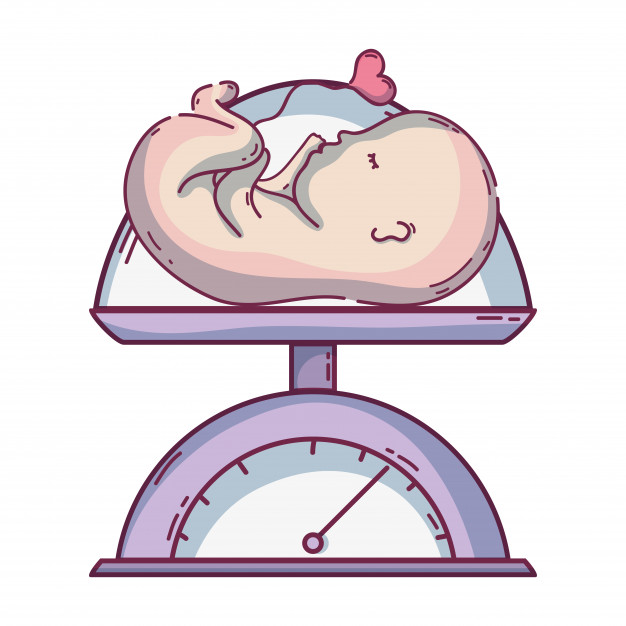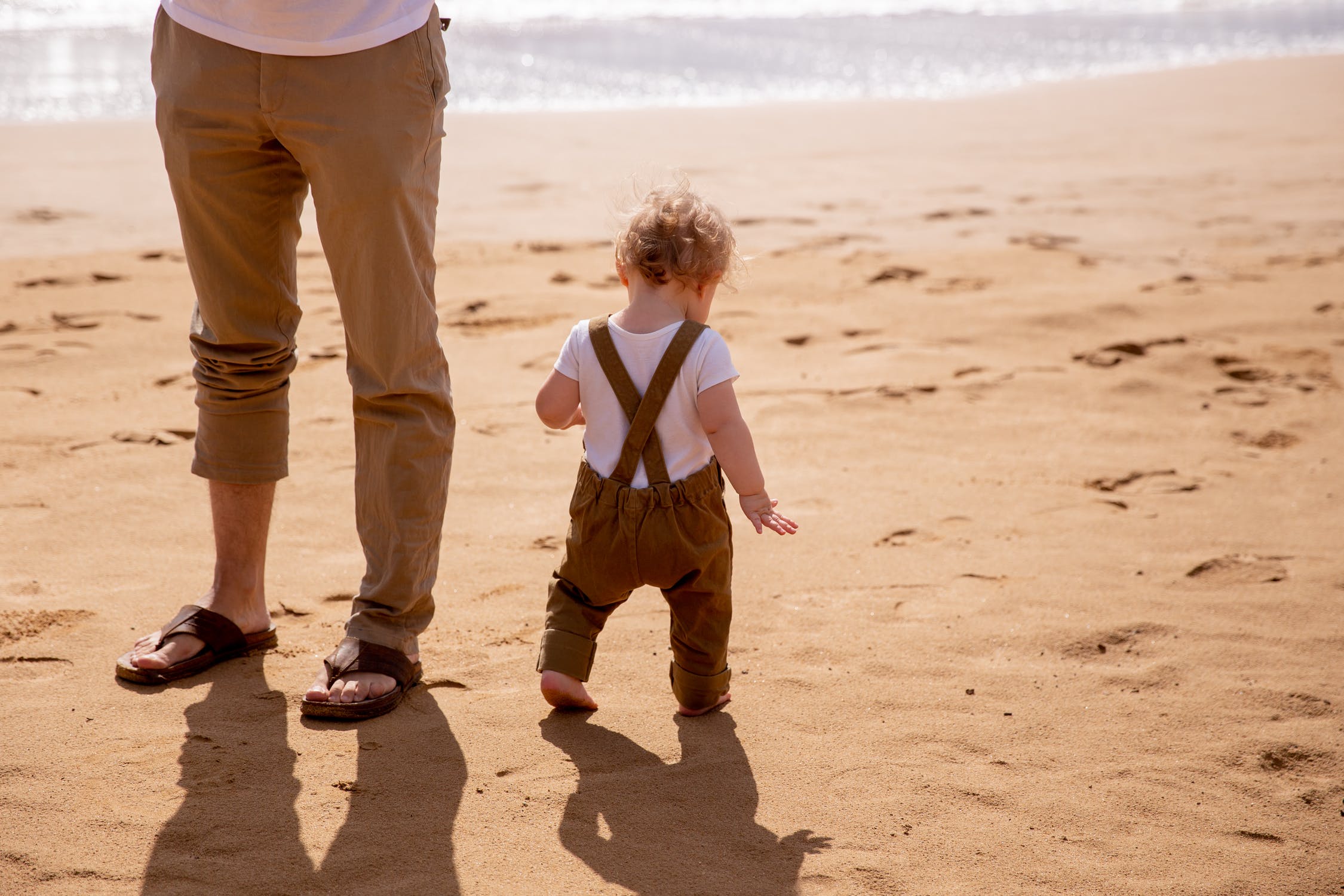Watching your baby grow in size and unfold the various stages of development such as to reach for your hand, to sit, to walk and to speak is undoubtedly one of the most fascinating pursuits. The experience gives you lots of enjoyment, pleasure and, what is more, knowledge and understanding of the child. And, understanding of growth and development, mind you, contributes enormously to the child’s intelligent management.
One suggestion that will stand you in good stead and give you immense satisfaction and pleasure once the baby has rapidly grown up: Maintain a baby booklet and jot down the points of interest about your observations in the child’s progress.
What is growth and development?
Growth is a measure of physical maturation. It signifies an increase in the size of the body and its different organs. Thus, it can be measured in terms of centimetres or inches and kilograms or pounds.
Development is a measure of functional maturation. It signifies accomplishment of mental (acquisition of skills, etc.), emotional (development of attitudes, etc.) and social (adaptability to family and society, etc.) abilities. Unlike growth, it is rather difficult to assess development.
You will appreciate that, generally speaking, growth and development are so closely interrelated that it is virtually not quite possible to separate one from the other. Consequently, in practice, the two terms are either used together or, if used separately, usually denote synonymous meaning.
Growth of different body systems happens at a different pace. The nervous system shows maximum growth in the first year of life. Thereafter, it grows very little. A serious disturbance of growth may affect the development of brain. As a result, delay in the acquisition of such skills as walking, social adaptation and speech occurs.
It must be clearly understood that the speed at which growth occurs is not the same at various ages. In the first six months it is exceedingly rapid so that a six-month-old is double his birth weight. By the end of the first year, the birth weight trebles. A child of two years weighs four times his birth weight. In the following years and until puberty, growth happens at a slower pace.
It is of interest to note that at different ages, the body growth is not uniform. As for instance, during infancy, the head is much larger in relation to the size of the rest of the body. This proportion gradually changes to assume the adult ratio in the subsequent years of childhood and during adolescence.
Also, in younger children, the limits are relatively short. With the passage of years, their length increases at a greater pace than that of the trunk and the head. Doctors find the relationship between sitting height (trunk and head) with total height a useful index in the diagnosis of certain disorders of growth.
Types of body build
Ectomorphicbuild refers to relative preponderance of linearity, light bone structure, small musculature and subcutaneous tissue in respect to body length and large surface area.
Endomorphic build refers to a relatively stocky structure and a large amount of subcutaneous tissue.
Mesomorphicbuild falls in between the above-mentioned builds. Here the individual has relative preponderance of muscle, bone and connective tissue with a heavy, hard physique of rectangular outline.
What influences growth and development?
Not one thing but quite a few factors.
In the first place, hereditary factors have a great bearing on the eventual constitution of the body. Tall parents are very likely to have tall children.
Nutritional factors also influence the growth and development in a considerable way. Malnutrition retards a child’s physical growth and development. There is some evidence that it may affect his intellectual performance if it occurs fairly early in infancy and still worse if it affects the baby in the womb.
Several other factors, including socio-economic status, emotional, environmental and seasonal influences, chronic diseases and infections also affect growth.
How far the growth potential influences growth has been a somewhat controversial issue. However, it is generally held that the smaller the child at birth, the smaller is he likely to be in the subsequent years. The bigger the child at birth, the bigger is he likely to be later. Thus, the growth potential is somewhat indicated by the child’s size at birth.
Weight

On an average, the ideal birthweight is said to be about 3.4 kg. The infant doubles his weight by the age of five to six months and trebles it by one year. He increases it four times in two years, five times in three years, six times in five years and ten times in ten years.
You must have your child weighed at birth. He should also be frequently weighed in the first few weeks of life. A poor weight gain may be a warning signal drawing attention to a disease or underfeeding. Do not weigh him every now and then after that. The practice is not only unnecessary but also undesirable. You will only be wasting time by doing so and also inviting unnecessary worries.
I would suggest the following schedule for weighing the baby:
First – at birth
Second – at one week
Then every week till he is 3 months of age
3 months to 6 months – every fortnight
6 months to one year – every month
1 to 2 years – every 3 months
Thereafter – every 6 months
As long as your child is happy, energetic and kicking about and the doctor feels he is normal, do not start worrying even if he is little below average in weight.
Length/height
On an average, the ideal length of a full-term healthy infant at birth is 50 cms. It steps up to 60 cms at three months, 70 cms at nine months, 75 cms at one year, 85 cms at four years. Thereafter, the child gains a little over 5 cms every year until the onset of puberty.
As I remarked while talking about the weight, do not fuss if your child is a little shorter than the average figures, provided he is active, well and running about and provided that the doctor, after checking him up, says there is nothing wrong with him. Your child may be below average in weight and height but he can jolly well be a normal child.
Head size
Head circumference which reflects growth of the brain shows the
following pattern of increase:
Birth – 13 to 14 inches
6 months – 16 inches
12 months – 18 inches
3 years – 19 inches
6 to 8 years – 20 inches
10 to 12 years – 21 inches (nearly adult size).
For your incidental interests, if the brain does not develop normally as is the case in one type of mental retardation, the head size is likely to be small. It is called microcephaly. Occasionally, the small size of the head may be due to premature union of the skull sutures. A large head may be the result of hydrocephalus or rickets.
Remember, a marginally large head (macrocephaly) may well be a family trait. It is just normal.
Teething (dentition)

The average age at which the first tooth appears is six to seven months. The rest of the milk teeth appear at the rate of one tooth every month.
Thus, the number of teeth in an infant is age in months minus six. By 2½ to 3 years, the child has a full set of milk teeth numbering
20. Generally, the lower central and the lateral incisors appear earlier followed by first molars, cuspids and second molars in succession. The first permanent teeth – the so-called six-year-molars – are
sometimes confused with the temporary teeth. The pattern of eruption of temporary and permanent teeth is shown in the following tables.
Temporary teething
The number of temporary and permanent teeth is shown in the following table:
Number of teeth
Let me set the tone by saying that development is the “essence” of a child’s life. The frequent complaint about development pertains to delayed walking or delayed/unclear speech.
Important milestones at a glance
Social smile 6 weeks Head holding 3 months Sits with support 6 months Sits without support 7 months Reaches out for a bright object and gets it 5 to 6 months Transfers object from one hand to the other 6 to 7 months Starts imitating a cough 6 to 7 months Crawls 8 to 10 months Creeps 10 to 11 months Stands holding furniture 9 months Stands without support 10 to 11 months Walks holding furniture 12 months Walks without much of a support 13 months Says one word with meaning 12 months Says 3 words with meaning 12 months Joins 2 or 3 words into a sentence 15 to 18 months Feeds self with a spoon 13 months Climbs stairs 15 to 18 months Takes shoes and socks off 15 to 18 months Puts shoes and socks on 2 years Takes some clothes off 2 years Dry by day 3 to 4 years Dresses self fully 2 years Dry by night 3 years Knows full name and sex 3 years Rides tricycle 3 years
The important milestones in development of speech are given in the box below.
If other milestones such as sitting, crawling, standing and walking are within normal time limits, some delay in speech need not bother you, provided that his hearing is fine. He may just be a “late talker” and begin talking soon.
The commonly-held belief that delayed speech is usually secondary to tongue-tie is a myth. The true tongue-tie (which is infrequent) may, however cause unclear speech.
While sorting out the problem of delayed speech, doctors always make it a point to exclude hearing loss. Remember that deafness may often be partial. For instance, the child may have only high frequency deafness. This means that he cannot appreciate the human speech though he may respond to whispers, clicks, noise of car, radio and door banging. Whenever you suspect a hearing problem of the child, look up your doctor who may like to take the expert opinion from an ENT specialist.
Many parents take pride in repeating child’s baby talk. This is just not right. It contributes to his continuing with baby talk for a longer period.
Growing pains
Many school-going children in the age group of six to eight years usually complain of pains, more so in the calf and thigh muscles, usually towards the evening or night. The timing of these pains is typically when the child is resting and contrasts with the other body pains which usually occur after exertion. Growing pains may subside for weeks or months and then reoccur.
Interestingly, the cause of the growing pains remains an enigma – a sort of a riddle – despite various hypotheses by the medical think-tanks.
It is useful to consult the paediatrician to exclude any organic cause of pains, particularly if you notice any swelling, redness or tenderness in a joint or two, if the child develops fever or if the pains are severe enough not to be tolerated. He shall make sure that some organic disease is not being camouflaged under the shield of growing pains.
At the end of the day, I would ask you to go by the advice of your doctor. If he feels that these indeed are the growing pains, there is nothing to worry. Do cooperate with him if he advises deworming of the child, some calcium, iron and vitamin supplementation and a pain killer.
In my experience, quite a proportion of such children feel better after a change in the ill-fitting shoes. Some children with growing pains benefit from massage to the affected areas, application of hot fomentation plus lots of love and psychotherapy.




